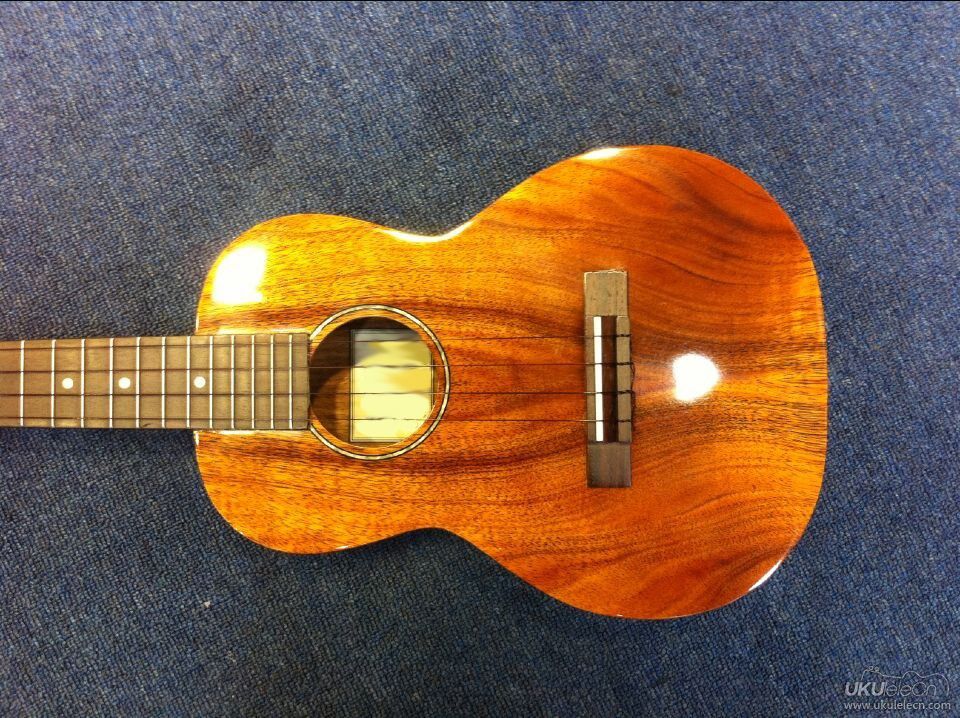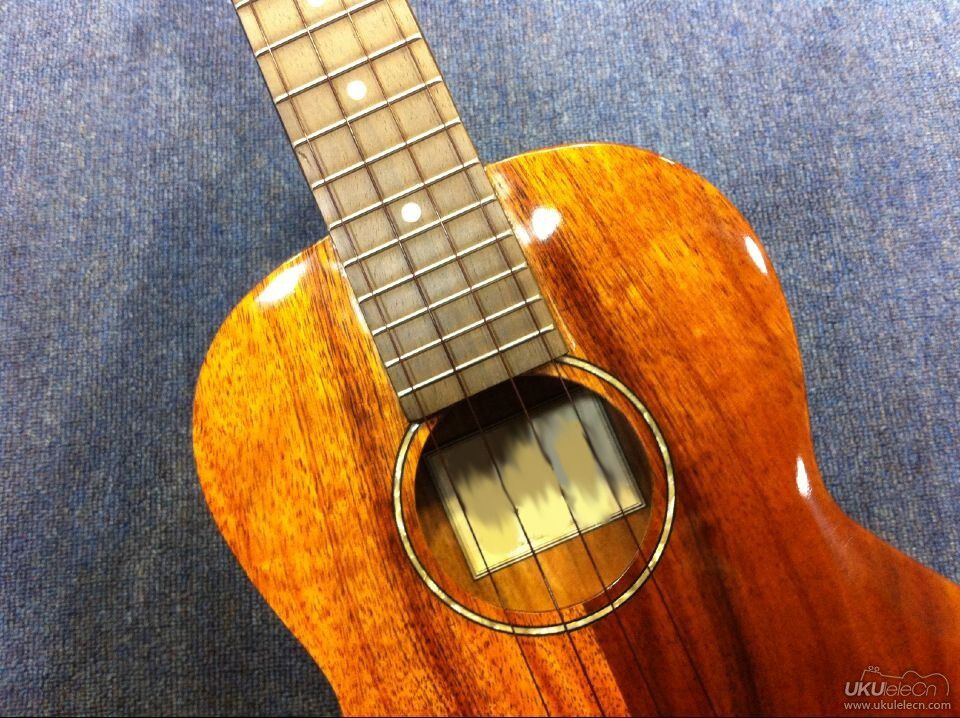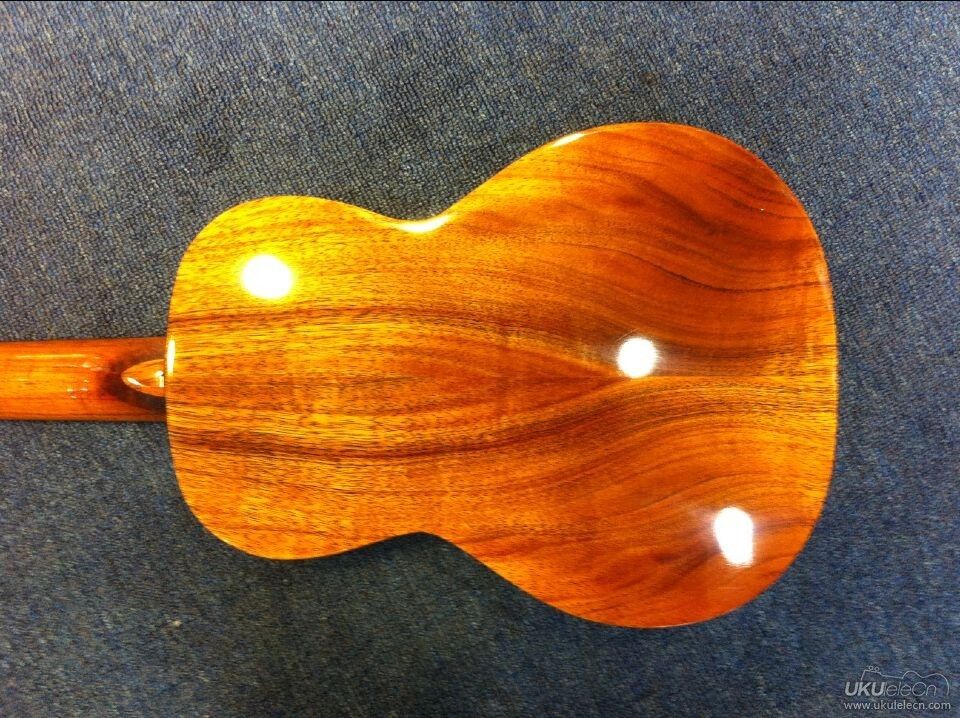Recently a Chinese netizen purchased a uke at around USD800. The seller claimed it is made by Hawaiian Koa.
This sparkled (VERY) heated controversy among the Chinese ukers as they believe the Hawaiian Koa's grain should be less intense, the hue should be more gold-ish instead of the reddish color as shown below.
This tonewood issue has bugged quite a number of Chinese ukers, so I 've asked the permission of the buyer to post the photos here. We believe the experienced luthiers from this forum can kindly give us unperceived opinions.
I have deliberately removed the brand label to avoid any biases. Does this uke looks like Hawaiian Koa or Asian Acacia to you?



This sparkled (VERY) heated controversy among the Chinese ukers as they believe the Hawaiian Koa's grain should be less intense, the hue should be more gold-ish instead of the reddish color as shown below.
This tonewood issue has bugged quite a number of Chinese ukers, so I 've asked the permission of the buyer to post the photos here. We believe the experienced luthiers from this forum can kindly give us unperceived opinions.
I have deliberately removed the brand label to avoid any biases. Does this uke looks like Hawaiian Koa or Asian Acacia to you?



Last edited:
